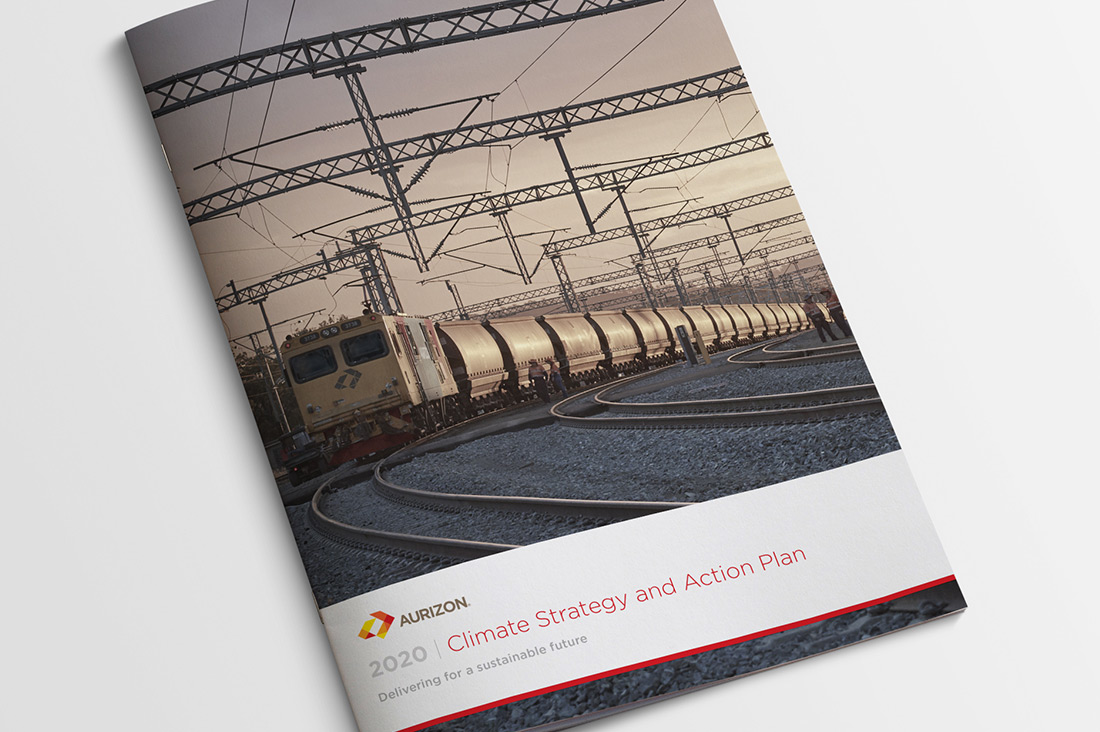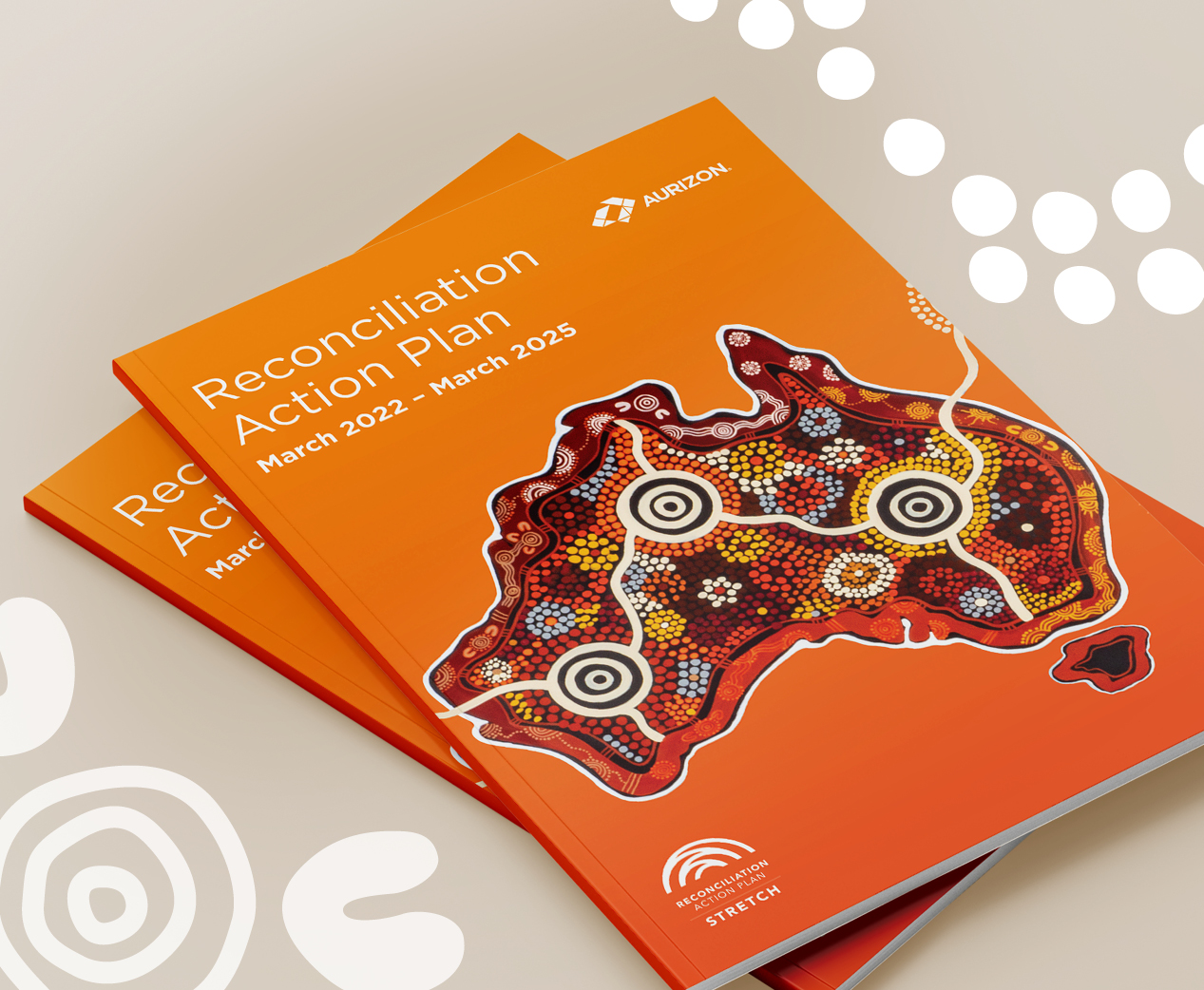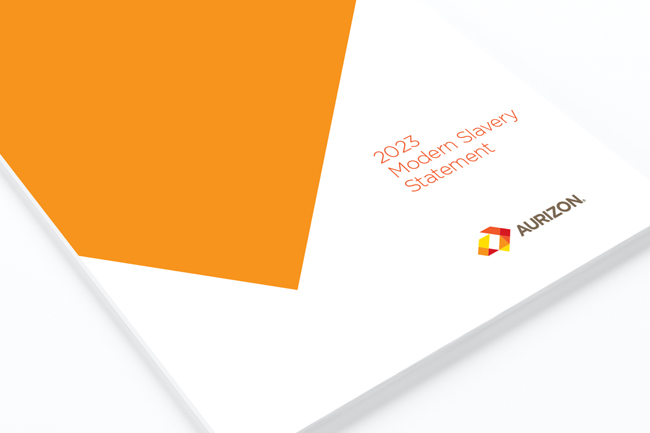Supporting long-term sustainable growth.
Our commitment to sustainability
Aurizon is committed to building a more sustainable future for our communities, customers and stakeholders.
Watch the short animation to get an insight into the progress we have made to date and how we are determined to do even more, as we continue striving to net-zero operational emissions by 2050.
2024 Sustainability Report
Our latest Sustainability report demonstrates the progress we have made with key sustainability initiatives over the past year.
We aim to continuously enhance our operations, creating sustainable value for employees, customers, communities and investors.
Emissions calculator
See just how much transportation by rail could potentially save in fuel consumption and greenhouse gas emissions.
Rail is the safest and most environmentally-friendly mode of land freight transport, delivering significant greenhouse gas emissions intensity benefits when compared to road freight transportation (dependent on commodity and length of haul).
| Payload (tonnes) | |
| Distance (km) | |
| Truck Configuration | |
| Freight Type |
Note: Aurizon's emissions calculator outputs are scaled to reflect an average weight of product hauled by Aurizon on behalf of customers across multiple commodity types, ranging between 6000 to 9000 metric tonnes of payload per service.
Distances for key Aurizon haulage routes
| Route | Distance (km) |
|---|---|
| Kalgoorlie to Fremantle Port (North Quay Rail Terminal (NQRT WA) | 710 km |
| Forrestfield to Fremantle Port (North Quay Rail Terminal (NQRT WA) | 42 km |
| Leonora to Fremantle Port (North Quay Rail Terminal (NQRT WA) | 974 km |
| Leonora to Kwinana (WA) | 948 km |
| Kalgoorlie to Kwinana (WA) | 683 km |
| Victoria Dock Melbourne (VIC) to Forrestfield (WA) | 3481 km |
| Swanson Dock Melbourne (VIC) to Fisherman Island BMT (QLD) | 1947 km |
| Mount Isa to Townsville (Northwest Rail Corridor QLD) | 978 km |
| Hermidale to Port Waratah (NSW) | 682 km |
| Glenlee (NSW) to Forrestfield (WA) | 4072 km |
| Tarcoola (SA) to Darwin (NT) | 2200 km |
| Adelaide (SA) to Darwin (NT) | 2979 km |
| Adelaide (SA) to Alice Springs (NT) | 1555 km |
| Adelaide (SA) to Perth (WA) | 2568 km |
| Adelaide to Port Augusta (Spencer Junction) (SA) | 315 km |
| Adelaide to Port Pirie (SA) | 220 km |
| Adelaide to Tailem Bend (SA) | 119km |
| Adelaide to Wolseley (SA) | 307 km |
| Adelaide to Gladstone (SA) | 217 km |
Disclaimer:
The results generated by Aurizon’s greenhouse gas (GHG) emissions calculator are intended for general informational purposes only. Aurizon cannot ensure the accuracy and comprehensiveness of a customer's resulting GHG emissions and net savings from its supply chain activities as calculated by this tool. Actual GHG emissions related to a specific rail freight service may vary due to factors including (without limitation) locomotive type, quantity, and other variables inherent to the rail network, commodity type, and route. Users are advised to interpret the calculator results with caution and to consider additional factors that may impact GHG emissions and net savings in their specific context.
The GHG emissions output from this calculator should not be relied upon for Users’ own reporting purposes and Aurizon bears no responsibility for use of outputs from this calculator in Users’ own reporting.
The GHG emissions factors utilised for rail and road supply chain activities are sourced from the most current version of the Australian Government Department of Environment and Energy National Greenhouse Accounts Factors and the road haulage calculations utilise the Australian Trucking Association Truck Impact Chart: Technical Advisory Procedure. These resources are publicly available for reference and may be the subject of updates from time to time, in which case the GHG emissions calculator may not accurately reflect a customer's resulting GHG emissions and net savings from its supply chain activities.
Distances for key Aurizon haulage routes are approximate, and distances for trucking and railing routes may vary even if the origin and destination are the same or similar.
In this calculator:
- "Tonnes (payload)" refers to the total tonnage (payload) of the commodity to be hauled, measured in metric tonnes.
- "Distance" denotes the one-way haulage distance from origin to destination, measured in kilometres.
- "Emissions" specifically pertains to those resulting from the combustion of mineral diesel in road and rail operations.
Climate Strategy and Action Plan
In 2020, we introduced our first Climate Strategy and Action Plan (CSAP). The CSAP brings a sharper focus within our Company to climate-related risks and opportunities, including our goal to further reduce Aurizon’s carbon footprint with specific targets, initiatives and investments.
Reconciliation Action Plan (2022-2025)
2023 Modern Slavery Statement
This is our fourth Modern Slavery Statement made pursuant to the Modern Slavery Act 2018 (Cth) (the Act) and constitutes the modern slavery statement of Aurizon for the year ended 30 June 2023.
It details our commitment to operating responsibly and ensuring that we have robust standards and processes to minimise and address modern slavery risks.
Previous reports
View our previous Sustainability reports and Modern Slavery Statements here.



